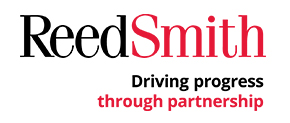Lynwood Reinhardt and Brooke Dorris examine the impact of private investment in public equity on de-SPAC transactions
The SPAC, or special purpose acquisition company, is a resurgent spin on the relatively well-trodden concept of a blank-cheque public company, formed to acquire a yet-to-be-identified operating business. While much ink has been spilled concerning the nature of SPACs and their merits and demerits, little attention has been paid to the real driver of the modern deal – the PIPE (private investment in public equity). The pivotal function of the PIPE is important for all parties involved, including:
(1) Indian companies that are potential investment targets of a SPAC;
(2) Indian promoters considering forming a SPAC; or
(3) Indian institutional investors looking to participate in a SPAC-related PIPE.

Partner
Reed Smith in Dallas, Texas
Tel: +1 469 680 4220
Email: LReinhardt@reedsmith.com
Back to basics
A SPAC is, at its core, a publicly listed entity formed for the purpose of effecting a business combination. Crucially, while most business combinations require “minimum cash to close”, cash that the SPAC brings to the table, the deal cannot depend on a single dollar in the trust being available to the surviving entity at the business combination. While a clean public shell has some value, few target enterprises are interested in a transaction where no additional cash is brought to the table. If this were the complete picture, few, if any, SPAC deals would get done, but the picture is not complete – the PIPE bridges the gap.
What makes PIPE attractive
The PIPE is an agreement to subscribe for shares of the SPAC that is executed at the same time as the business combination agreement. PIPE subscribers are institutional investors who are brought in through relationships with the SPAC management team, or through investment bank advisers who want to participate in the post-business combination entity. For the SPAC promoter, an existing PIPE investor relationship is a market differentiator that can make the promoter’s SPAC a more appealing IPO and a more appealing SPAC counterparty for a target. For the target, it is important to carefully consider the relationships of the SPAC to the PIPE market. Otherwise, it can be disastrous to spend millions of dollars in adviser fees and many weeks negotiating a business combination agreement only to have a failure to raise enough cash in the PIPE.
The PIPE investments are closed at the same time as the business combination (or shortly before or after, depending on the deal structure), and the cash coming from the PIPE investments is additive to the balance sheet of the SPAC. The PIPE subscription amounts are obligations that only depend on closing the business combination. In turn, a properly considered minimum cash to close provision will set the minimum cash amount at the PIPE amount. The result? A known deal at signing that has the minimum cash to make a transaction work.

Associate
Reed Smith in Dallas, Texas
Tel: +1 469 680 4255
Email: BDorris@reedsmith.com
PIPE influences entire deal
While it sounds simple in concept, the PIPE’s critical function in bridging the gap of competing interests means that it influences every element of negotiation. For example, during negotiations before the letter of intent is signed, the requisite size of the potential PIPE – based on market interest – influences the agreed enterprise valuations. During negotiations regarding the definitive agreement for the business combination, the palatability of terms, and how standard those terms will appear to PIPE investors, is a major driver of the drafting process. During the pre-closing period, a major factor on whether to adjust the transaction terms in light of any changed circumstances is whether those changes will affect the obligation of the PIPE investors. If so, then the changes are usually rejected.
Issues to consider
Virtually every aspect of the SPAC transaction is affected by the PIPE, or considerations surrounding the PIPE. Issues to consider include: Date of availability of Public Company Accounting Oversight Board financials; long-stop date for closing the business combination; market-standard nature of representations and warranties in the definitive agreement governing the business combination; and size of any secondary cash-out by the existing stockholders.
India-specific considerations are also an important overlay. For example, the most common structure for a SPAC transaction is a “reverse” merger of a target with and into a wholly owned subsidiary of the SPAC. Under US law, this would usually not be a taxable transaction. However, under the Indian income tax act, the structure would likely be a taxable event. Further, Reserve Bank of India (RBI) approvals for transactions can dramatically slow the pace and anticipated timing of a transaction, particularly given the RBI’s sensitivities to round-tripping.
The single best piece of advice? No matter how you are participating in the transaction, make sure your advisers, both financial and legal, have deep experience in SPAC transactions. Proceeding without such advisers in place from an early stage risks killing a deal before it even gets off the ground.
Lynwood Reinhardt is the partner of Reed Smith in Dallas, Texas. He can be contacted on +1 469 680 4220 and LReinhardt@reedsmith.com
Brooke Dorris is the associate of Reed Smith in Dallas, Texas. She can be contacted on +1 469 680 4255 and BDorris@reedsmith.com

Reed Smith
2850 N Harwood Street Suite 1500 Dallas
Texas 75201 United States
Contact details:
Tel: +1 469 680 4200



























